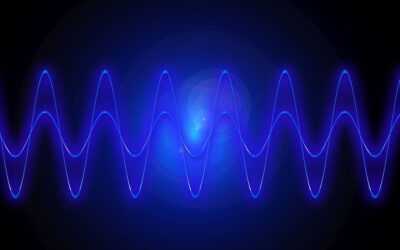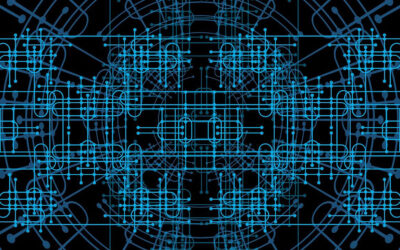
Electronic structure of an elemental topological insulator Bi2Se3 with a single Dirac point at the apex of the conical band dispersion
With this focus issue on Topological Insulators – From Materials Design to Reality guest editors Claudia Felser, Shoucheng Zhang, and Binghai Yan are catching a snapshot of the materials and applications aspect in the field of topological insulators (TIs). The scope of the focus issue comprises functional materials design by both experiment and theory leading to novel materials classes, and ultimately to real devices. Potential future applications cover areas such as spintronics, thermoelectrics, quantum computing and beyond. Likewise, the understanding of the physics governing the underlying phenomena is a prerequisite for the successful implementation of such devices.
Topological insulators are a new quantum state of matter discovered in recent years. Their topological nature is similar to the quantum Hall effect, a major discovery of condensed-matter physics in 1980s (Klaus von Klitzing, Nobel Prize in Physics, 1985). The manifestation of the topological effect is the existence of robust gapless surface states inside the bulk energy gap.
It is remarkable that TIs have been realized in many common materials, without the requirement of extreme conditions such as high magnetic field and low temperature. The first TI was predicted in 2006 and experimentally realized in 2007 in HgTe quantum wells. Soon afterwards, three traditionally well-known binary chalcogenides, Bi2Se3, Bi2Te3 and Sb2Te3, were predicted and observed to be TIs with a large bulk gap and a metallic surface state consisting of a single Dirac cone. The discovery of these topological materials opened up the exciting field of topological insulators. Extensive experimental and theoretical efforts are devoted to synthesizing and optimizing samples, characterizing the topological states by surface sensitive spectroscopy, transport measurements, device fabrications, and searching for new material candidates. The field of TIs is now expanding at a rapid pace in the communities of physics, chemistry and materials science.
This focus issue in physica status solidi – Rapid Research Letters complements ten overview articles on various aspects of this vibrating and quickly expanding field with ten letters exposing brand new results.
Topological Insulators – From Materials Design to Reality [Preface]
Binghai Yan, Claudia Felser and Shou-Cheng Zhang
Topological insulator nanostructures [Review]
Judy J. Cha, Kristie J. Koski and Yi Cui
Magnetotransport and induced superconductivity in Bi based three-dimensional topological insulators [Review]
M. Veldhorst, M. Snelder, M. Hoek, C. G. Molenaar, D. P. Leusink, A. A. Golubov, H. Hilgenkamp and A. Brinkman
Bismuth-based candidates for topological insulators: Chemistry beyond Bi2Te3 [Review]
Anna Isaeva, Bertold Rasche and Michael Ruck
Review of 3D topological insulator thin-film growth by molecular beam epitaxy and potential applications [Review]
Liang He, Xufeng Kou and Kang L. Wang
Circular dichroism in angle-resolved photoemission spectroscopy of topological insulators [Review]
Yihua Wang and Nuh Gedik
Topological insulators from the perspective of first-principles calculations [Review]
Haijun Zhang and Shou-Cheng Zhang
Topological phase transition in bulk materials described by the coherent potential approximation technique [Review]
Stanislav Chadov, Janos Kiss, Jürgen Kübler and Claudia Felser
Topological insulators and thermoelectric materials [Review]
Lukas Müchler, Frederick Casper, Binghai Yan, Stanislav Chadov and Claudia Felser
Floquet topological insulators [Review]
Jérôme Cayssol, Balázs Dóra, Ferenc Simon and Roderich Moessner
From the adiabatic theorem of quantum mechanics to topological states of matter [Review]
Jan Carl Budich and Björn Trauzettel
Observing electronic structures on ex-situ grown topological insulator thin films [Letter]
S. H. Yao, B. Zhou, M. H. Lu, Z. K. Liu, Y. B. Chen, J. G. Analytis, C. Brüne, W. H. Dang, S.-K. Mo, Z.-X. Shen, I. R. Fisher, L. W. Molenkamp, H. L. Peng, Z. Hussain and Y. L. Chen
Structural and electronic properties of highly doped topological insulator Bi2Se3 crystals [Letter]
Helin Cao, Suyang Xu, Ireneusz Miotkowski, Jifa Tian, Deepak Pandey, M. Zahid Hasan and Yong P. Chen
Electron–phonon coupling in the two-dimensional electron gas on Bi2Se3 [Letter]
Lucas Barreto, Marco Bianchi, Dandan Guan, Richard Hatch, Jianli Mi, Bo Brummerstedt Iversen and Philip Hofmann
Intact Dirac cone of Bi2Te3 covered with a monolayer Fe [Letter]
M. R. Scholz, J. Sánchez-Barriga, D. Marchenko, A. Varykhalov, A. Volykhov, L. V. Yashina and O. Rader
Transport properties of Sb2Te3/Bi2Te3 topological insulator heterostructures [Letter]
Zuocheng Zhang, Xiao Feng, Minghua Guo, Yunbo Ou, Jinsong Zhang, Kang Li, Lili Wang, Xi Chen, Qikun Xue, Xucun Ma, Ke He and Yayu Wang
Fabrication and characterization of semiconducting half-Heusler YPtSb thin films [Letter]
Rong Shan, Enrique V. Vilanova, Juan Qin, Frederick Casper, Gerhard H. Fecher, Gerhard Jakob and Claudia Felser
Topological surface states of Bi2Se3 coexisting with Se vacancies [Letter]
Binghai Yan, Delin Zhang and Claudia Felser
Controlling edge states in the Kane–Mele model via edge chirality [Letter]
Gabriel Autès and Oleg V. Yazyev
Momentum-space instantons and maximally localized flat-band topological Hamiltonians [Letter]
Chao-Ming Jian, Zheng-Cheng Gu and Xiao-Liang Qi
Spectral flow for Aharonov–Bohm rings generated by zero-mass lines [Letter]
Timur Tudorovskiy, Vladimir E. Nazaikinskii and Mikhail I. Katsnelson

















